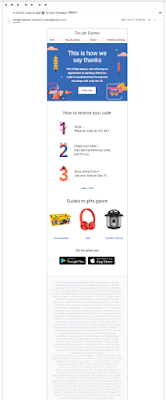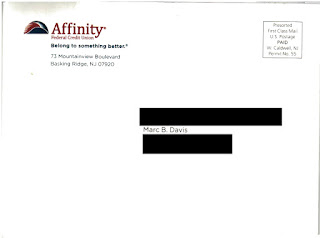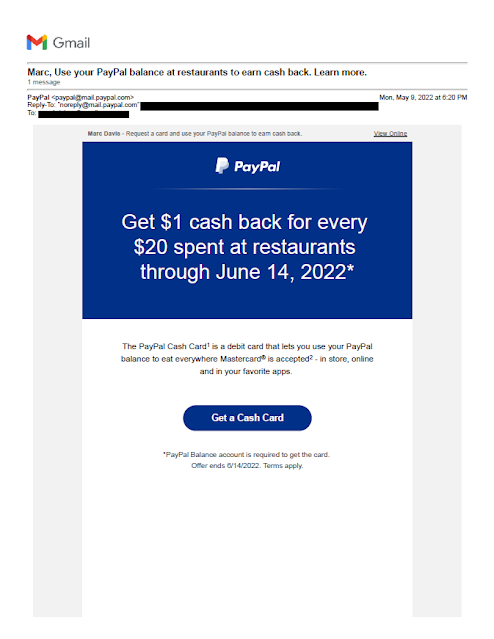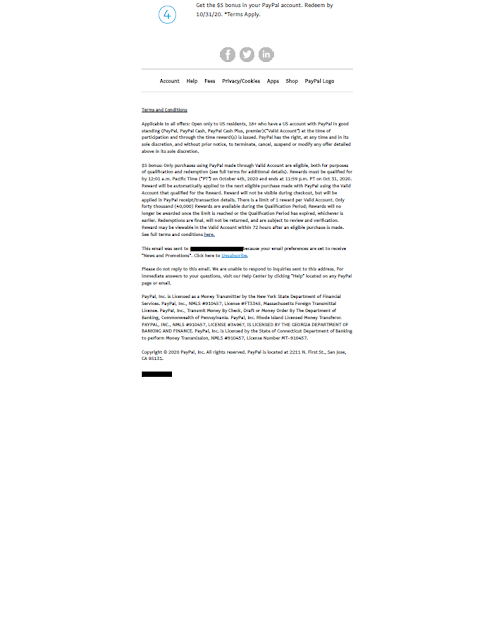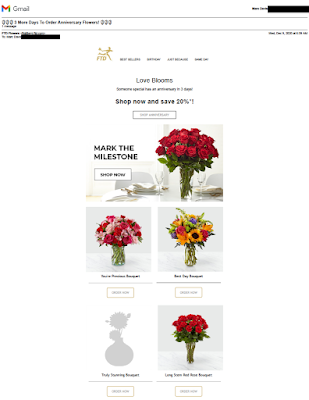This letter from Amazon Music Unlimited merits a Fail for Creative for a combination of mistakes and missed improvement opportunities.
- The letter is addressed to an Amazon Prime customer in a closed-face envelope with simple Amazon branding. This approach ensures a high open rate because Amazon and the customer have an ongoing business relationship, meaning the Prime customer will open the letter to see what it is about.
- The front of the letter is easily scannable. The Johnson Box clearly communicates that the Prime customer would benefit from 3 months of free … something.
- The sparse use of copy and generous use of white space help call out the benefits of Amazon Music Unlimited.
- The letter opens with a personal salutation, addressed to the Amazon Prime customer.
- The Call toAction on the front of the letter is easy to find.
The letterhead is from “Amazon Music,” which is already free with Amazon Prime. The Johnson Box could communicate that the offer is for 3 months of Amazon Music Unlimited for free.
The opening sentence is not grammatically correct. It opens with “As a valued Amazon Prime member, we have a special offer for you:” This is an incorrect use of a dangling modifier. The opening phrase “as a valued Amazon Prime member” describes “you,” the customer -- not “we,” the company. The independent clause that begins with “we” does not match the opening phrase, which lacks a subject. While typical customers reading the letter might not remember grammar rules taught in high school, they might subconsciously notice that the sentence feels clunky, which detracts attention from the message. Keeping the message intact, a better opening would be:
“As a valued Amazon Prime member, you are eligible for a special offer:”
or, perhaps,
“As a valued Amazon Prime member, you can enjoy this special offer:”
The complete value proposition of the low price is hidden in the Disclosure on the back. I would be forthright and mention upfront that the cost is under $8 a month after the third month.
The letter mentions the feature of being “ad free” a couple times (with varying use of hyphens). This could be brought up a level by messaging the benefit, i.e. “Listen to music non-stop, without interruptions.”
While the letter opens with a personal salutation, the closing is from “Amazon Music Team.” A truly sincere closing would be from Bob Bowen, Worldwide Head of Music, or even Jeff Bezos.
The letter includes supporting messages on the back. The front of the letter could use a message referring to the back of the letter to learn more.
 |
| Back of letter |
On the back of the letter, the Call to Action appears twice; however, it is easily lost. In one location, it is almost as small as the Disclosure copy. It could be larger and positioned below the Disclosure without being distracting.
The front of the letter mentions “Limited time only.” It fails to mention how limited the offer is. The offer expiration date is buried in the Disclosure on the back. The problem with this approach is two-fold:
- The implied need for immediate action is lost, because the customer doesn’t know by when to take action. In other words, it’s easy for the customer to say, “I’ll take care of this later,” then forget about it.
- If the offer truly expires on the offer expiration date, and the customer attempts to sign up after the offer expires, the customer will be unhappy from the experience of missing out on the promotion. That dissatisfied customer would view Amazon less positively -- perhaps taking out their frustration by shopping less or even cancelling their Prime membership.
 |
| Simple Envelope |
Below is a rewrite of the front of the letter, with a bit more focus on product benefits. If Amazon likes the rewrite, I am willing to accept a personally signed thank-you letter.
Dear <Customer Name>,
Would you like to enjoy access to millions of songs, anytime, without interruption? Then here is an offer for Amazon Prime members like you: 3 months of Amazon Music Unlimited for FREE.
Sign up today to get unlimited access to more than 70 million songs. Listen ad-free from your home or mobile phone anytime with offline listening and unlimited skips. With so many new releases and thousands of playlists and stations available, we are sure to have your favorite tunes ready for your delight. In fact, with Amazon Music Unlimited, you can even control your music hands-free with Alexa, included in the Amazon Music mobile app and Amazon Echo devices.
BENEFITS OF AMAZON MUSIC UNLIMITED
Ö Unlimited anytime access to more than 70 million tunes
Ö Listen to music non-stop, without interruptions
Ö Enjoy music anywhere, online or offline
Ö Skip as much as you like
Ö Hands-free listening with Alexa
I’m so sure you’ll like Amazon Music Unlimited, I’m offering it to you for FREE for 3 months. After that, your subscription will renew for only $7.99 a month. You can cancel anytime.
This is a limited time offer, so visit amazon.com/trynow to sign up today.
Sincerely,
[signature]
Bob Bowen
Worldwide Head of Music
P.S. This offer is good only through <expiration date>, so be sure to review the information on the back of this letter and visit amazon.com/trynow to sign up for Amazon Music Unlimited today.
- Use correct grammar.
- Your benefits sell your product, so communicate them.
- Ensure that your Call to Action is easy to find.
- If your offer has an expiration date, don’t bury it.
- A personalized letter should be personally signed.
- When your brand covers multiple products in a customer relationship, an experience with one product can impact the entire relationship.
- Don’t just ignore the back of the letter -- you can use both sides of a page to make your sale.






